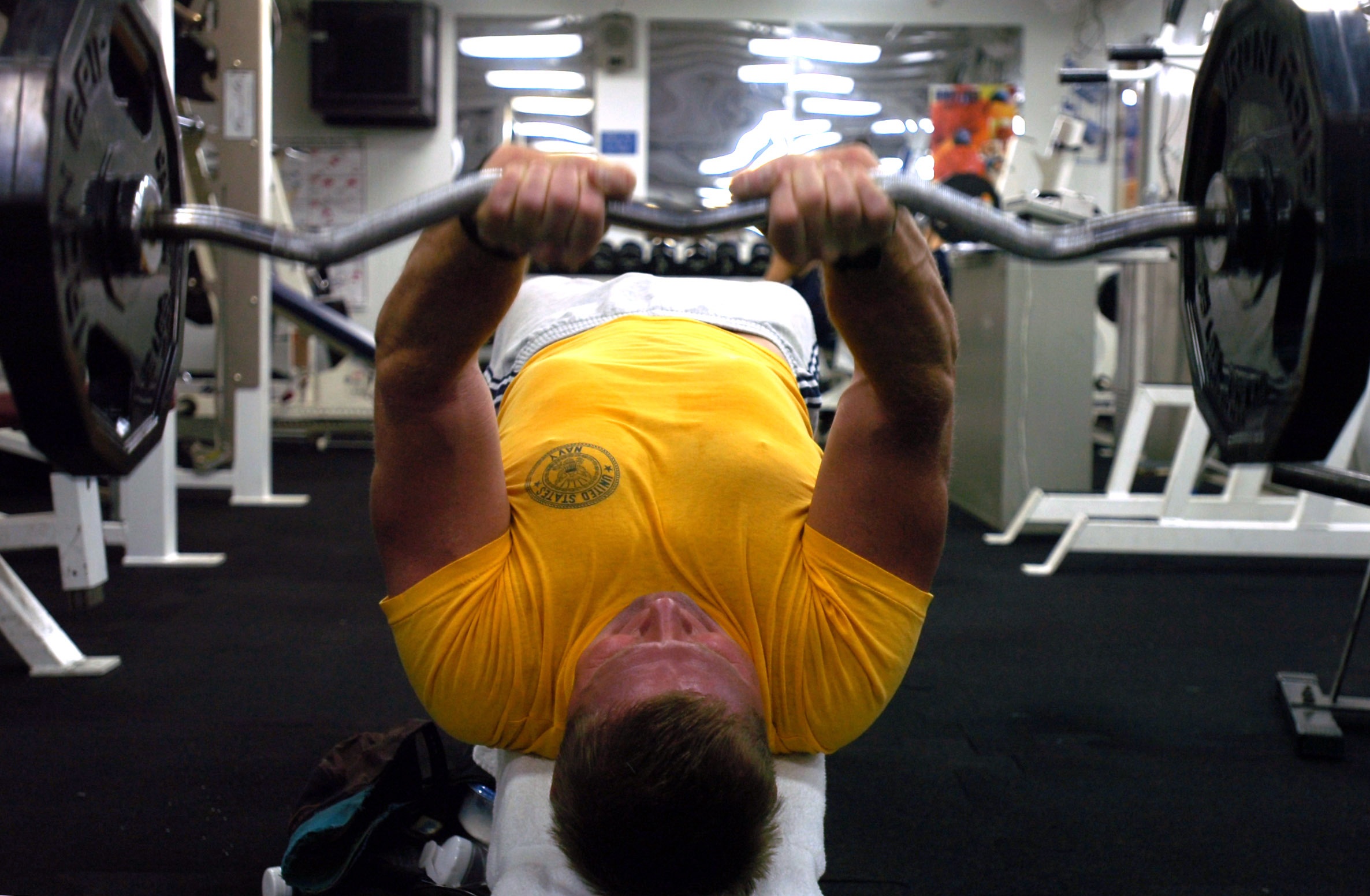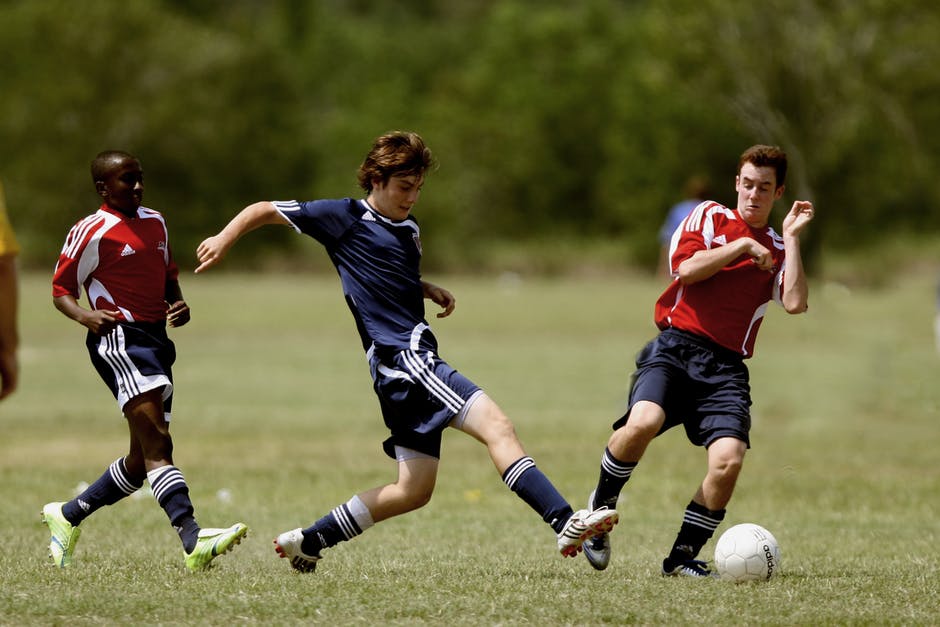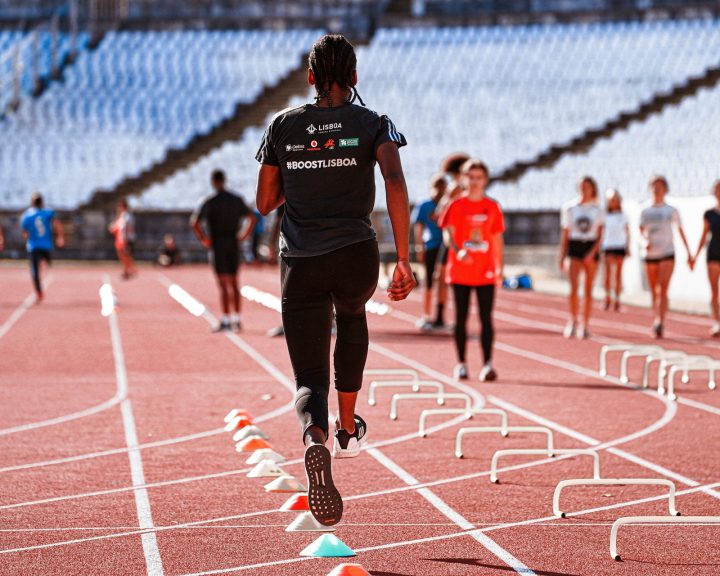Velocity of movement is in an important variable in many training studies. The idea usually being that athletics is performed at high velocities of movement, athletes need to be able to produce large amounts of power, and that training should be designed to optimize athletic power production. Having said that, it is assumed that as one trains for maximal strength one’s velocity of movement is going to slow greatly (it’s more difficult to move heavy weights quickly).
Padulo et al look at this with a three week bench press training program in the June issue of the International Journal of Sports Medicine. The authors are looking at pretty experienced subjects (mean age in the early 40’s with almost 20 years of resistance training behind them) and divide the subjects into two groups. One group performed each set of the bench press at 80-100% of maximal speed, the other at a self-selected training speed. Both groups trained two times per week at 85% of 1-RM.
The speed group performed each set until the speed of movement decreased by 20%, they finished each session when they were unable to achieve 80% of their maximum velocity. The self-selected group stopped each set at exhaustion. The self-selected group ended their training session when they could not perform another repetition at 85% of 1-RM. Both groups rested for two minutes between each set.
At the end of three weeks:
- The speed group increased their 1-RM bench press by more than 10%, the self-selected group increased their bench press by .17%.
- The speed group increased their movement velocity by more than 2%, the self-selected group by .11%.
- The speed group increased the number of repetitions performed per session by 35% over three weeks, the self-selected group increased the number of repetitions performed per session by 12%.
- The authors also looked at EMG activation of the upper body muscles and found that the activation (as measured by EMG) was greater for the speed group.
These results are interesting, it’s worth it to take a moment to consider what is going on in this study as the results are counter-intuitive because the self-selected group performed more repetitions than the speed group. This would seem to argue for the self-selected group having a bigger training effect as a result of the study. The authors argue that the greater barbell velocity during the speed group’s training (.154 meters/second vs. .146) did a better job of activating (and therefore training) the fast-twitch muscles. This (their argument) can be seen by the greater EMG activity for the speed group. Also the high velocity training might increase the ability of the muscles to recruit motor units. If that’s the case, then it would explain the increased benefit for the high velocity training. Now, it has to be pointed out that many speed-of-movement studies are looking at pure power production and focus on smaller loads (0-70% of 1-RM). While these loads allow for greater speeds of movement (and greater power), they are often too low to have a positive impact on maximal strength. For this reason, a study that looks at an appropriate training intensity (85% 1-RM) and shows that high velocity training is superior in terms of strength gains is interesting.
Padulo, J., Mignogna, P., Mignardi, S., Tonni, F., and D’Ottavio, S. (2012). Effect of different pushing speeds on bench press. International Journal of Sports Medicine, 33, 376-380.





4 thoughts on “High Velocity Training Leads to Better Maximal Strength Gains?”
Makes for an interesting study but a program should be build around both Velocity and Maximal effort. Louie Simmons does by alternating workout between the two approaches while others build in to their periordzation. Adam Archaletta NFL Safety for many years was a big advocate of speed rep in the BP and he did 27 reps at 225lbs at 6’2″ 212lbs
To me the study is interesting because a lot of the things that powerlifters and weightlifters “know” work aren’t supported by research (now this is true of most coaching practices btw). For example, studies on bands and chains are few and far between, conflict, and rarely employ them correctly.
Even if it is VERY interesting, this study is fishy in my opinion.
Padulo et al. reported that FPS group (speed group) have improved from 7(0.08) sets of 2.33(0.52) reps to 9 sets of 3.17(0.75) reps at 85% 1RM bench press.
The SPS group (self-selected; to exhaustion group)improved from 7.98(0.04) sets of 7(0.42) reps to 9 sets of 8.33(1.03) reps with 85% 1RM bench press.
Baseline for both groups were around 100kg (1RM) at BW of 75-77kg. Their relative strength is about 130%.
According to this table, that is not so ‘advanced’
http://www.exrx.net/Testing/WeightLifting/BenchStandards.html
Anyway, my point is that with 85% (in this case 85kg) advanced lifters are hardly able to do 7sets of 7 reps with 2min rest.
See Dan Bakers table for assessing 1RMs from reps-to-failure
http://www.danbakerstrength.com/wp-content/uploads/2008/06/table-1-2-for-estimating-1rm-from-reps-to-fatigue-tests.pdf
If we calculate 1RM from 7 reps with 85kg for experienced lifters we get 85×1,23 = 104,5kg.
After 3 weeks, they proceeded to 7 sets of 9 reps. Let’s assume that if they really push the first set (only one set) they could get 10reps. Recalculating improvement we get 85kgx1,33 = 113kg.
The study reported 0,17% percent change, but from these two predictions we get (113-104,5)/104,5 = 8%.
In most programs (i.e. TIER by Joe Kenn), training cycles with 85% call for 3-4 reps). And as Poliquin reported years ago, as you become more advanced you tend to lift LESS reps at same percentage of 1RM. For example real beginner can get 8 reps at 85%, while advanced can get 4-5 reps at 85%. This is also showed in Dan Baker’s table.
Just my two cents.
Regards,
Mladen
I don’t put any stock in those “estimate 1-RM/reps based upon…” tables. There are so many variables. Someone with more slow twitch fibers, i.e. more endurance, will do more reps at a given % of 1-RM than someone with more fast-twitch fibers. Then the lift changes things, typically we can do more reps at something like the bench/squat than the deadlift or power clean, etc. So I don’t see this as an issue just because the study doesn’t agree with someone’s table.
The thing that I do find “fishy” is these levels of gains, in people with 20+ years experience, in three weeks at 2x per week. I mean, if you could increase an experienced athlete’s bench press by 10% in only six sessions, you’d be a celebrity strength coach!
I really appreciate the amount of work you did on your post. Thanks for contributing, feel free to post my comments on your blog.
Comments are closed.